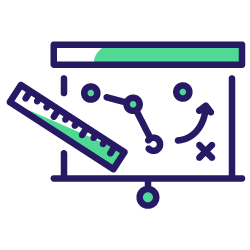During your technical audit, you become aware of the work and the many tasks to be done. You don’t know where to start? Prioritizing your SEO strategy according to your company’s business is the golden rule if you want to be effective!
As SEOs know, a strategy takes time to implement and crawlers have a limited amount of time to spend on your site. The implementation of your SEO actions takes time, it is important to rationalize it. What is the value of focusing on pages that do not convert?
Unlike the straightforward GoogleAds dashboards of SEA, the return on investment in SEO is difficult to calculate, even if switching to first-click attribution can help establish an estimated ROI.
The goal of this article is to help you focus on the strategic pages of your site.
In your to-do list, you will find issues such as:
- page structure
- orphan pages
- duplicate content
- status code in error
Develop an action plan to know which actions will have the most impact
An SEO audit can reveal many problems on your site. Where to start and how to proceed?
Segment, or break down your site into groups of pages, according to your needs
- By page type: this is a segmentation that will highlight the structure of the site in a simple and effective way.
For example, for an e-commerce site, types of pages will mean product pages and category pages. For a media site, it will mean article pages, article listings, and archived articles. - By category: if your e-commerce site includes several large categories, you can use them to segment the site, for example: dress, furniture, nursery.
Seasonality can also be a determining factor in your segmentation: if you work with products subject to strong seasonality (for example, swimwear), the period of your audit will be determining.
The objective is to have a view of your site that makes sense to you: In the structure of your site, where are the product pages?
Proceed by iteration
One of the classic problems of e-commerce sites is managing a very large volume of pages. To implement SEO actions, it is recommended to proceed by iteration. This means selecting a sample of pages that convert, that bring added value to your business, and testing your recommendations on this sample before deploying it on all pages.
For e-commerce sites with a large number of pages, this way of proceeding allows you to avoid a brutal change on the whole site, and to test the business impact of SEO actions on a part of the site before the global deployment.
You have to ask yourself the right questions: What part of my site should be put forward in SEO? For an e-commerce site, it is usually the category pages, product pages…
Cross-reference crawl data with your traffic or Googlebot behavior (if you have access to your logs)
In Oncrawl, the ‘Depth’ tab allows you to have a better understanding of the behavior of Googlebot on your site according to the depth of your pages. Depending on the volume of pages analyzed, the results can be very different.
In our example below, we can see that pages in depth 1, 2 and 3 have the highest crawl rates. This is good news. It means that Googlebot focuses on the pages closest to the home page (which should be our priority pages in SEO).
Page structure

Source: Oncrawl
We can also look at the frequency of crawl per day and per depth. On the graph below, we notice a clear difference between depth 1 (the home page) and the following depths. The important thing is that the pages with the lowest depths are the most regularly crawled, which is the case for our example.

Source: Oncrawl
Content
We can also check duplicate content. By crossing the data on SEO titles and SEO visits, we can see that we have more visits on pages with unique SEO Title.
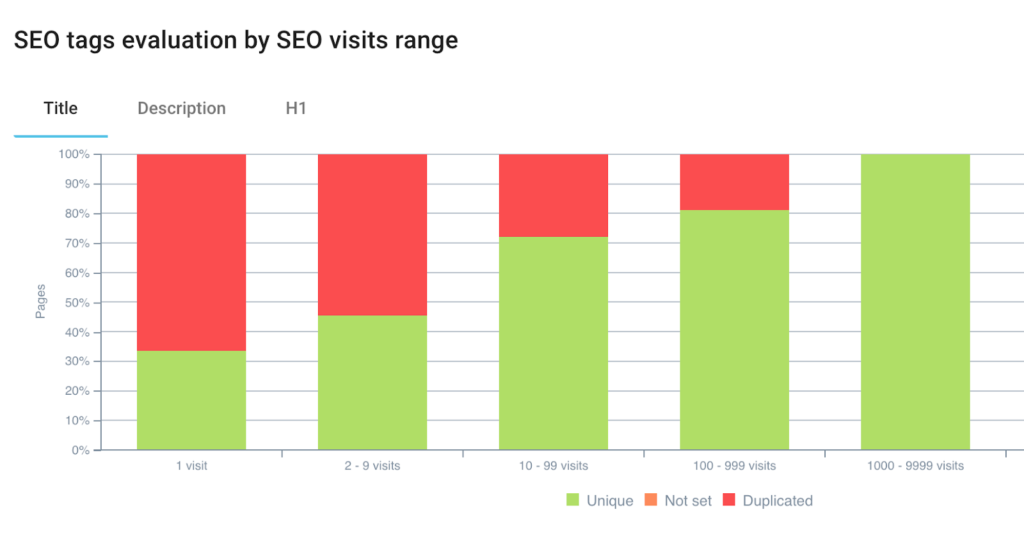
Source: Oncrawl
To continue further on the analysis of content, Oncrawl allows you to measure the impact of the number of words per page.
In our example below, we can draw a parallel between the number of words per page and the crawl rate.
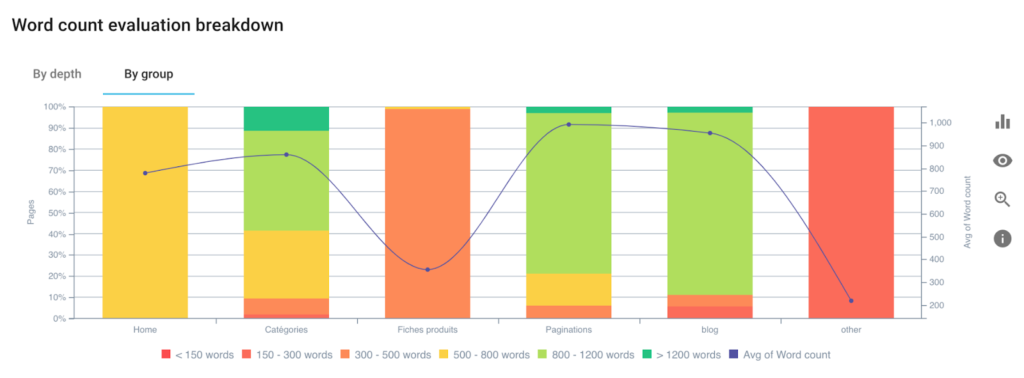
Source: Oncrawl
A focus on category pages is logical for an e-commerce site: these are pages to put forward on the SERPs, there is a strong value added to rank well in Google.
By filtering only on category pages, we notice that pages with less than 800 words receive fewer visits than pages with content between 800 and 1200 words.

Source: Oncrawl
By monitoring the crawl rate per day according to the number of words, this confirms the importance of a fairly long content for Google.

Source: Oncrawl
It is important to filter on a specific page template to avoid bias in your analysis.
Request your custom demo
Choose the most important page templates
You now know that the depth of your pages is a key factor in optimizing the crawlability of your site. It is time to dig a little deeper into the product pages to work on.
Focus on your product pages
Import your business data: turnover, profit margin, product availability, … This will allow you to focus on the products that have value-added for your business.
Imagine working on a sample of products that are not available (out of stock): What would be the impact of this SEO action?

Source: Oncrawl
Your product pages are essential for your business. How can you segment them to better determine the SEO actions to implement?
By integrating your data via Data Ingestion, you can create and use a segmentation based on your specific KPIs for your business.
– Data related to your profit margin
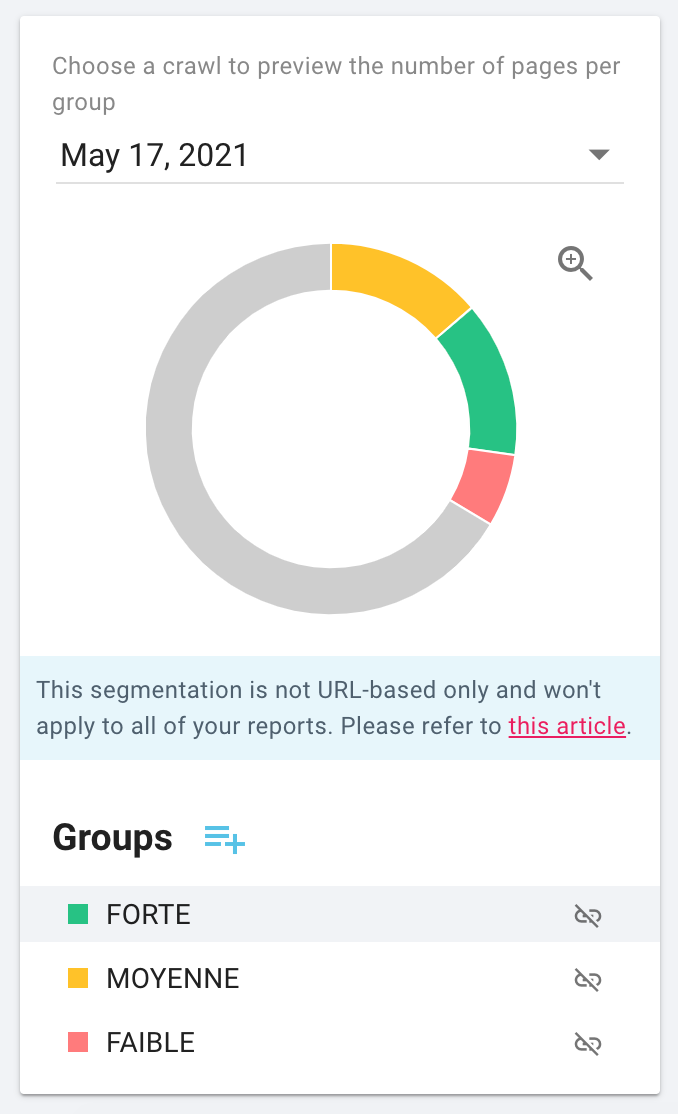
Source: Oncrawl
The graph above includes the entire structure of your site. The colored part represents the product pages. The colors are different depending on the range of profit margin for each product. This allows you to segment the product pages from a business point of view.

Source: Oncrawl
This enables you to identify certain product pages in depths 12 and 17 to 20 that have a high margin. It would be interesting to work specifically on these pages because they generate a significant margin.
Finally, we now have a precise vision of the pages where SEO work should be a priority.
Below is an example of the filters to be applied in Data Explorer to search for these pages:
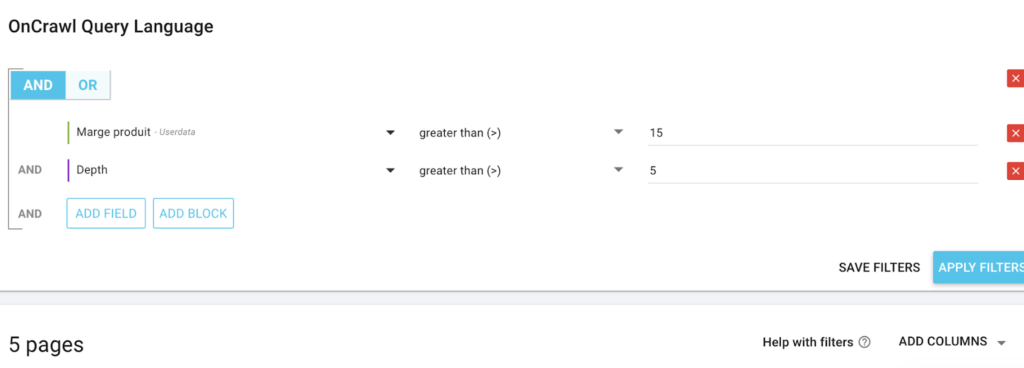
Source: Data Explorer Oncrawl
Score your pages: from the most strategic to the least strategic
Sometimes, you may not be able to obtain or integrate certain data related to your business. In this case, you can proceed by scoring your pages. This allows you to determine the strategic pages for your business.
For example, you can determine scores between 1 and 5 according to the degree of importance of your pages.
This score can take into account different factors:
- The earning potential
- The difficulty to source products (availability, seasonality, competition)
- The conversion rate of the pages via Google Analytics
Without revealing or using sensitive information for your business, you can use this file with Data Ingestion to add a score for each URL.
You can create a segmentation in the same way as before, this time based on the score you have set.
Going further
The prioritization of your SEO actions is crucial in your strategy. Choosing the right actions to implement as a priority can save you a lot of time and also help you reach your business goals as soon as possible!
This article showed three tips, but feel free to go further in your analysis. Data Ingestion has no limits! Be imaginative regarding the data you can import that will have the best potential according to your site.
You might also consider analyzing the synergy of your SEO and SEA campaigns via Data Ingestion ;)
